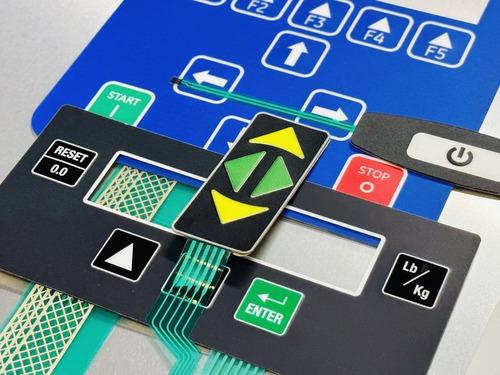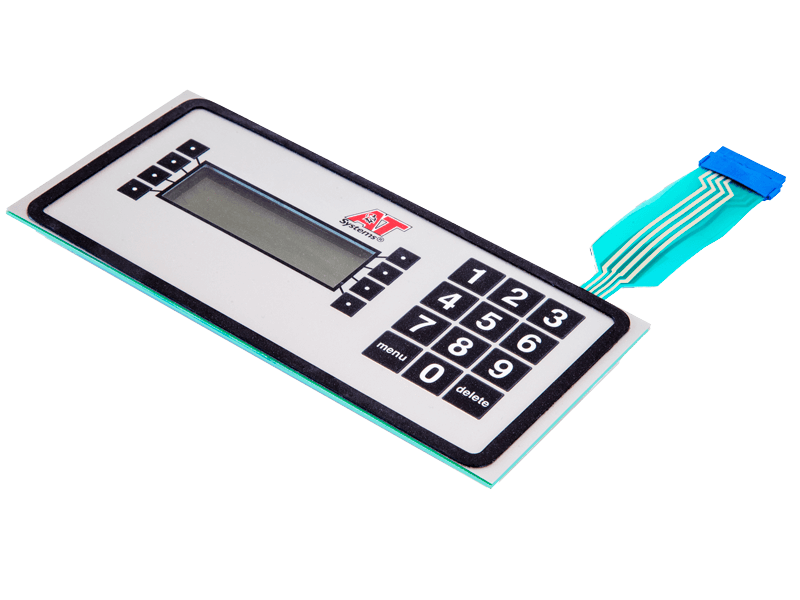Membrane Layer Switches Over Explained: A Comprehensive Overview to Their Advantages
Membrane switches stand for a advanced and functional remedy for producing interface throughout a range of fields. Their multilayered style not only guarantees functionality via basic stress yet also offers substantial benefits, such as resilience and personalization. As sectors significantly look for reliable and effective control user interfaces, comprehending the specific benefits and applications of membrane layer changes comes to be necessary. The intricacies of their design and implementation existing unique obstacles that benefit better assessment. What variables should be considered to totally take advantage of their capacity in modern applications?
What Are Membrane Buttons?

When stress is related to the membrane layer button, the layers make contact, completing an electric circuit. This basic device allows for a broad variety of applications, from customer electronic devices to commercial machinery. Membrane layer switches are frequently designed to be immune and water-proof to dirt and impurities, making them appropriate for atmospheres where resilience is essential.
In addition, the versatility of the products used in membrane switches promotes cutting-edge layouts that can adjust to numerous shapes and measurements. This flexibility adds to their popularity in diverse fields, consisting of medical devices, vehicle controls, and home devices. Generally, membrane changes stand for an essential component in contemporary customer interface innovation, connecting the space between individuals and digital systems.
Key Advantages of Membrane Switches
Among the myriad of user interface choices available, membrane layer switches over stick out for their one-of-a-kind combination of benefits. Among the key advantages is their lightweight and small design, which permits for assimilation into a broad variety of gadgets without adding considerable bulk. This is particularly advantageous in applications where space is restricted.
Additionally, membrane changes deal toughness and resistance to environmental aspects. They are typically built with materials that can withstand wetness, dust, and numerous chemicals, making them appropriate for rough conditions. This durability adds to a much longer life-span contrasted to conventional mechanical buttons.
An additional significant advantage is the flexibility in modification. Membrane layer switches can be published with various graphics, colors, and structures, enabling for tailored designs that meet particular branding or functional demands. This adaptability includes the number of layers and circuit choices, providing designers with numerous arrangements.
Moreover, the tactile feedback offered by some membrane changes improves individual experience, making them a lot more user-friendly to operate. The simplicity of cleaning and maintenance even more solidifies membrane switches as a sensible option in both consumer and commercial applications. In general, these crucial benefits make them a favored service for numerous developers and suppliers
Applications in Various Industries
Exactly how do membrane switches discover their location throughout diverse sectors? Their versatility and performance make them essential parts in fields ranging from healthcare to consumer electronics. In medical tools, membrane layer buttons are utilized for their ease of cleaning and resistance to contamination, ensuring hygiene in settings where sterility is vital.
In the customer electronic devices sector, these buttons supply streamlined, easy to use interfaces that enhance item aesthetics while maintaining durability versus wear and tear. Automotive applications benefit from membrane switches over also, where they are utilized in dashboards and control board, offering trusted efficiency in tough problems.
Furthermore, commercial equipment uses membrane buttons for control panels as a result of their toughness, ability to withstand harsh environments, and personalized layouts that deal with specific operational demands. The food industry leverages membrane switches for their convenience of usage and resistance to spills, making sure operational effectiveness in hectic settings.
Inevitably, the versatility of membrane changes throughout these diverse applications highlights their important function in modern-day technology, enhancing user communication while meeting industry-specific needs. Their proceeded development promises more combination right into arising areas and innovative items.
Design and Personalization Alternatives
The layout and personalization options offered for membrane buttons are crucial for tailoring interfaces to satisfy details individual demands and aesthetic choices. These buttons can be developed in various shapes, dimensions, and formats, permitting smooth combination right into varied applications. The adaptability in style suggests that manufacturers can develop special interfaces that improve use that site and keep brand identity.
Custom-made colors, graphics, and appearances can be used to the surface of the membrane switch, offering an opportunity for branding and customer interaction. Furthermore, backlighting options, such as LED lighting, can be included to boost exposure in low-light problems, hence boosting capability.
Practical components can i loved this also be customized, including responsive comments and actuation force, which can be readjusted to suit various customer communications. The option of products, such as polyester or polycarbonate, enables variants in toughness and environmental resistance, dealing with the particular needs of different sectors.
Inevitably, the substantial design and modification capacities of membrane layer buttons allow firms to produce aesthetically attractive and user-friendly interfaces, making sure that their items satisfy both useful and aesthetic needs properly. Membrane Switches.
Factors To Consider for Application
Implementing membrane layer changes needs mindful factor to consider of various factors to ensure ideal capability and customer experience. Among the primary factors to consider is the designated application environment. Aspects such as exposure to moisture, extreme temperatures, and chemical compounds can considerably impact the switch's efficiency and longevity. Picking products that stand up to these conditions is critical.

An additional essential element is the switch's style and format. Making certain that the responsive responses and actuation pressure line up with individual expectations boosts functionality. Carrying out individual screening can provide important insights into the optimal design.
In addition, compatibility with electronic components need to be examined. The switch's wiring ought to straighten with the general system design, guaranteeing trusted signal transmission and minimizing interference.
Furthermore, production techniques and expenses must be evaluated. The selection between custom styles and common designs can affect both budget and lead time.
Last but not least, consider repair and maintenance. Membrane layer switches may call for certain cleansing and treatment procedures to maintain their appearance and functionality gradually. By addressing these factors to consider, organizations can implement membrane layer switches that fulfill their operational demands while providing a positive customer experience.

Verdict
In final thought, membrane layer switches stand for a long lasting and flexible control interface suitable for a vast array of applications across multiple industries. Membrane Switches. As technology proceeds to progress, the relevance of membrane layer switches in contemporary tools stays considerable, offering both performance and aesthetic appeal.
Membrane switches over stand for a innovative and functional service for developing individual interfaces across a selection of fields.Understanding the fundamental components of contemporary digital interfaces, membrane layer switches are a kind like this of individual interface tool that consist of versatile, slim layers of material. On the whole, membrane switches represent a critical element in modern customer interface innovation, bridging the void between users and digital systems.
Amongst the myriad of customer interface choices readily available, membrane layer changes stand out for their one-of-a-kind combination of benefits.The layout and modification alternatives readily available for membrane switches are critical for tailoring interfaces to satisfy specific individual requirements and aesthetic preferences.